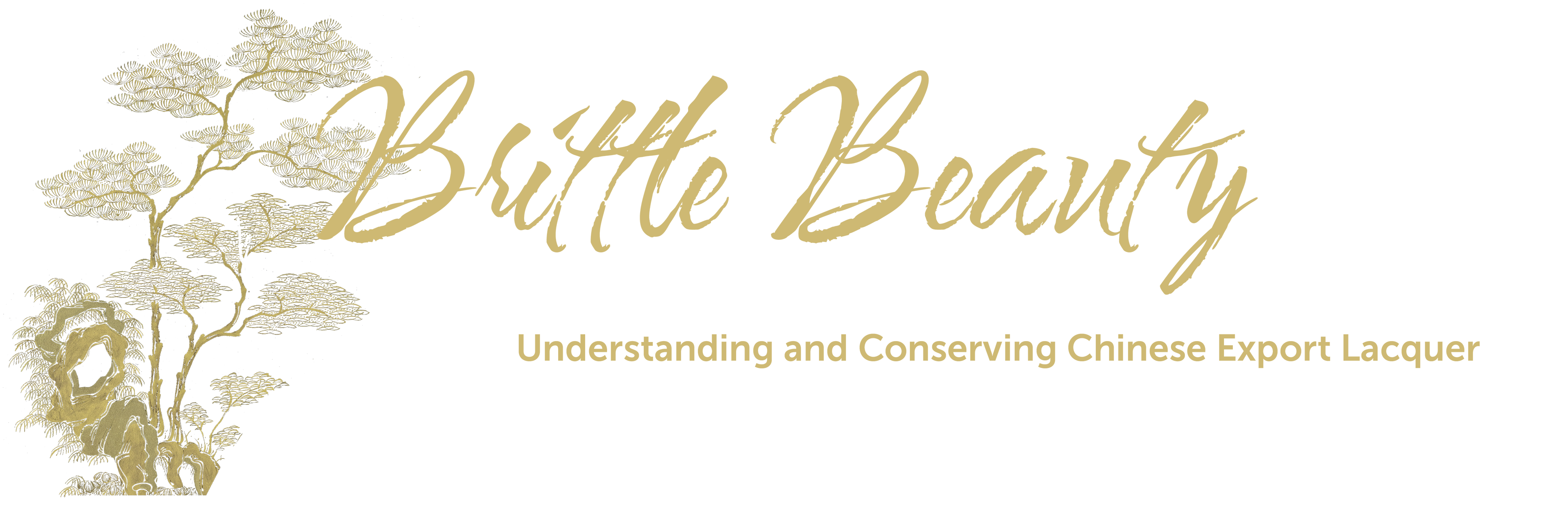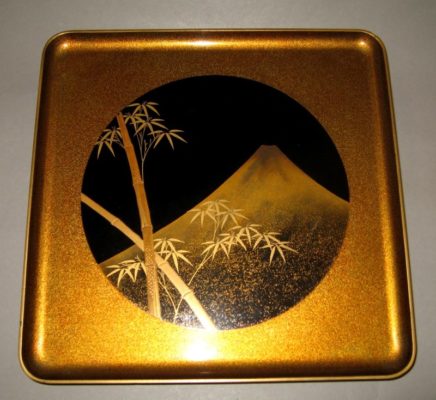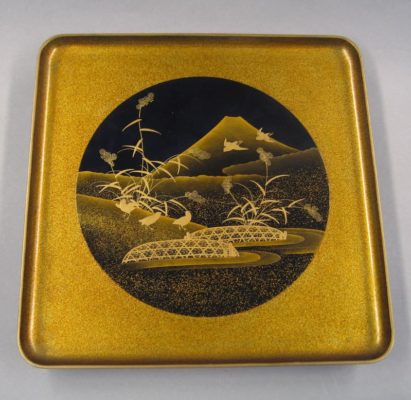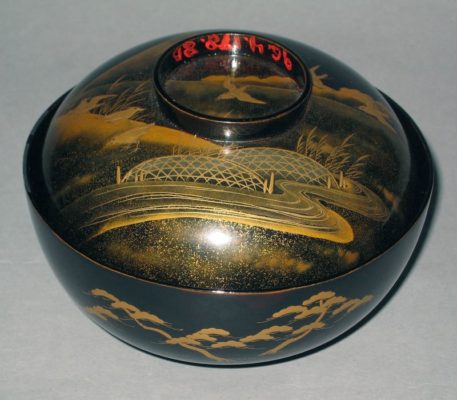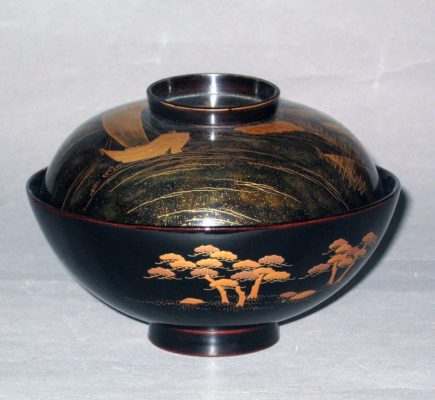Japanese Lacquer with maki-e (“sprinkled picture”) Decoration
Japanese lacquer, urushi, is made with the processed sap from the lacquer tree Toxicodendron vernicifluum, applied in many thin coats to a wood core and decorated with powdered metals, shell, and other materials. The hardening and polishing process required for each layer as well as the application of decoration adds month or years to the production time. These lacquerwares, called maki-e, are decorated with a sprinkled design of gold and silver flakes and powders.
Preparation of the wooden core
Wood (often cherry), carefully seasoned for years to minimize warping and cracking, forms the base of most Japanese lacquer. The lacquer worker carves the wood into a lightweight form—thin enough for light to shine through its pores yet sturdy enough to support lacquer over its entire surface, inside and out. The worker paints ground layers of lacquer mixed with clay, chalk, charcoal, and other additives followed by layers of pure lacquer, applied with flat brushes of human hair to minimize brush strokes.
Maki-e decoration
Maki-e refers to decorative techniques in which metal flakes or powders are brushed or sprinkled onto wet lacquer and covered with more layers of lacquer. Depending on the desired effect, the lacquer is then ground and polished to reveal and enhance the gold decoration. Maki-e decorative techniques include hiramaki-e (sprinkled picture in low relief) and takamaki-e (sprinkled picture in high relief). One maki-e technique involves drawing a design in ink on paper, tracing it in red-tinted lacquer on the reverse side, and pressing the paper—lacquer-side down—onto an object, transferring the design. Next, the decorator fills in design elements in red lacquer directly on the piece and taps gold powder onto the design through an open-weave cloth tied to the end of a hollow bamboo tube. This removes excess powder after the piece has cured, revealing the decoration.
Japanese trade with the West
In 1543 Portuguese mariners arrived in the port of Nagasaki, Japan, to establish trade. With them came Jesuit missionaries intent on gaining Catholic converts. After quashing a rebellion by Christianized peasants in 1637, and alarmed by the increasing trade in Japanese sex slaves, Japanese leaders expelled the Portuguese and severely restricted contact with the West. From 1638 to 1853, they permitted only limited trade with Dutch merchants from a “factory” in Nagasaki harbor. Although these policies curtailed direct export of Japanese lacquer to the West, small amounts of this highly coveted material continued to reach European and American consumers through secondary markets and through Chinese merchants who bought Japanese lacquer for resale to the West. In 1854 Commodore Perry led a fleet of seven steam-powered warships into Japanese waters and compelled the Shogun to sign the Treaty of Peace and Amity, establishing formal diplomatic relations between Japan and the United States and reopening trade with the West.
Trays and covered bowls
Japan; about 1800
Wood, Asian lacquer, gold powder
Campbell Collection of Soup Tureens at Winterthur 1996.0004.178.001-.005, .007-.010.
Whereas Western consumers preferred dinner services in sets of eight, their Japanese counterparts commissioned sets of five. The use of square, rather than round, trays further indicates that this set was made for Japanese domestic use.
